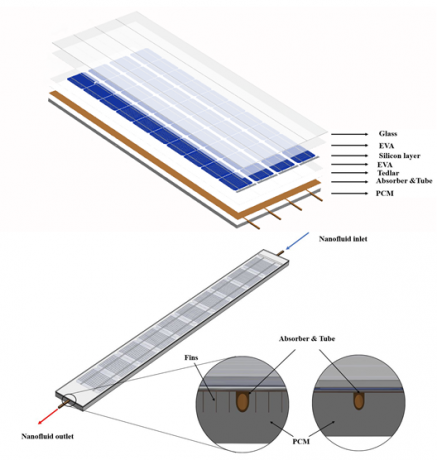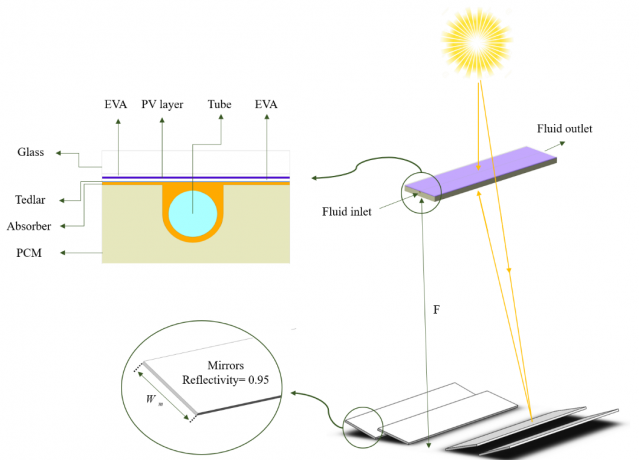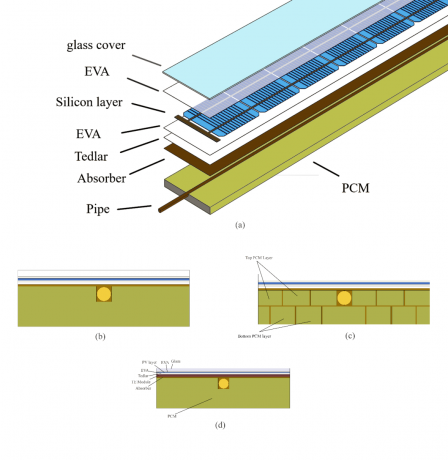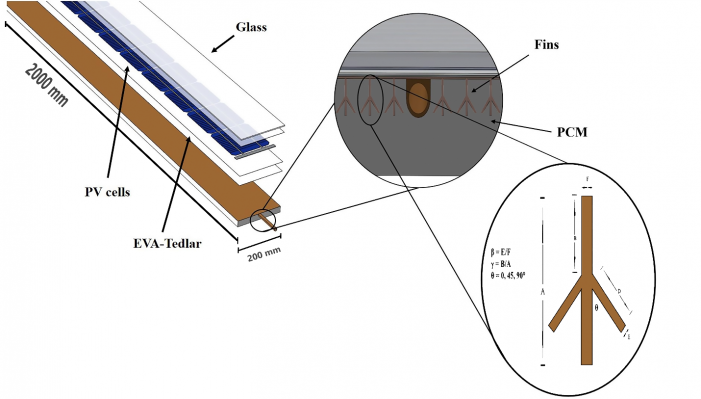Photovoltaic Thermal Systems (PVT)
Photovoltaic Thermal Systems (PVT)
In the last decade, the emission of CO2 (Carbone dioxide) and greenhouse gases into the planet's atmosphere due to the burning of fossil fuels cause major problems, such as climate change and global warming. On the other hand, due to industrialization and population pollution, energy demand is increasing drastically. To deal with these problems, it is essential to exchange the current source of energy with renewable ones. Among them, solar energy due to its accessibility and reliability has a high potential to compensate for the energy required of the world.
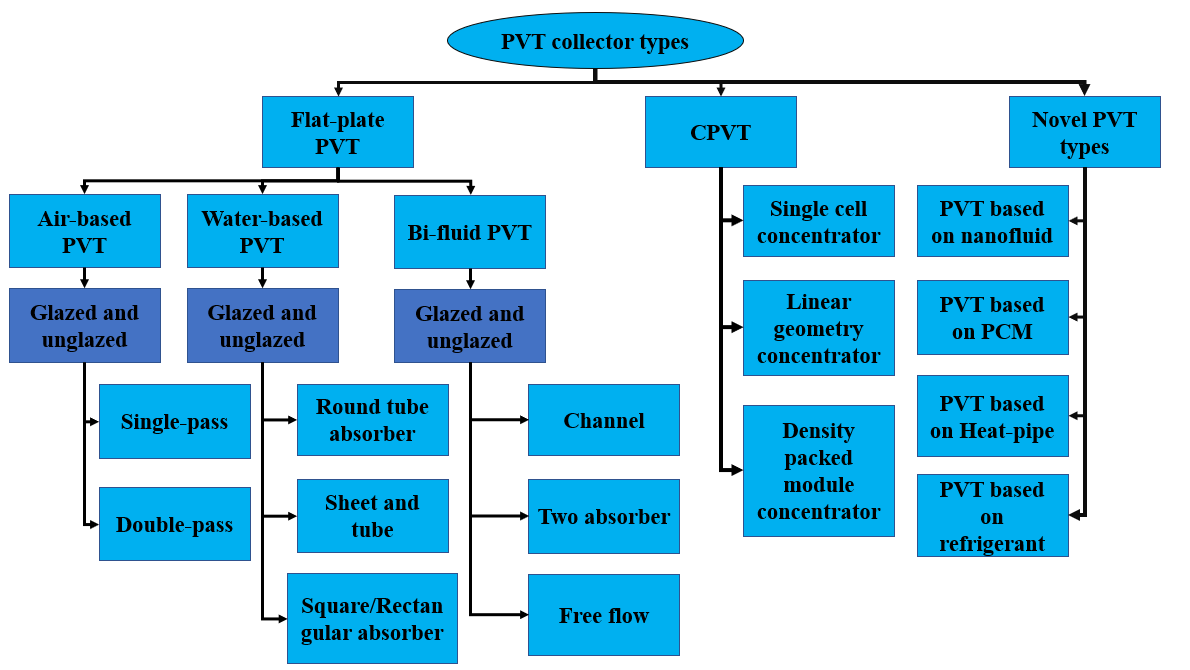
Solar energy can harvest and convert into utilizable energy in many different ways. Solar systems which have the responsibility of harvesting the energy, mainly fall into three categories: a) photovoltaic panel which renovates the solar radiation directly into electricity, b) collector which absorbs the heat and turns it into thermal energy, c) and hybrid PVT system which can harvest energy in both ways of electrical and thermal energy.
Photovoltaic modules have low electrical efficiency, and increasing temperature in the panel tenses this issue. The photovoltaic/thermal system can cover the gaps by absorbing heat from the panel. Also, in the limited space using the photovoltaic/thermal system is more efficient than using a PV module and solar collector individually (has a higher output and reduces the cost of installation). The photovoltaic/thermal systems are commonly classified by HTF (heat transfer fluid). The productivity of the PVT (photovoltaic/thermal) collector relies on design parameters, such as being glazed or unglazed, type of photovoltaic unit, and environmental parameters, such as the wind speed and irradiation. Several investigations and research were scrutinized, and different approaches were taken to enhance the productivity of the PVT collectors in both thermal and electrical scopes.
Owing to population pollution in the previous decade, the heat demand was increased drastically. Renewable energies as an alternative solution for energy resources have been considered. Among the renewable energy resources, solar energy because of its preponderance such as being safe and cheap can satisfy the world’s energy demand. Furthermore, solar energy can be harvested in various types of energies. Therefore, its applications expand in wide-ranging such as electricity production (PV panels), hot water production (evacuated tubes), water desalination technologies, and generating both electrical and thermal energies (hybrid Photovoltaic thermal systems). Photovoltaic thermal systems are unique equipment that can turn radiation into electricity. In PVT units, a thermal harvester is attached to the photovoltaic panel. PVT systems not only have higher productivity in comparison with a stand-alone photovoltaic panel but also, are capable to generate thermal energy through collector components simultaneously. Various factors such as device dimensions, inlet velocity, pressure drop, and glass cover affect the thermal productivity of these systems
